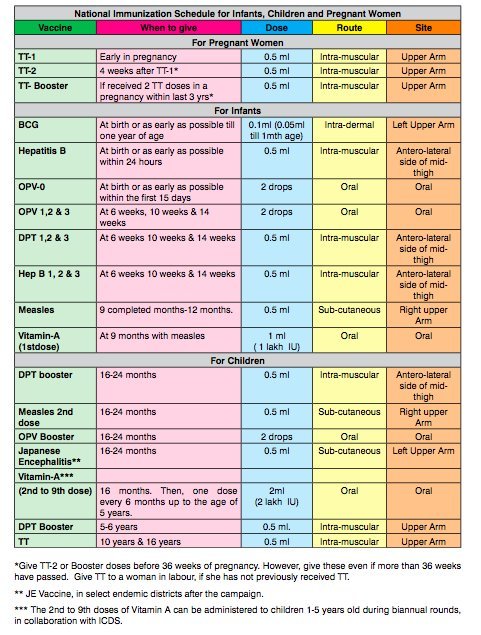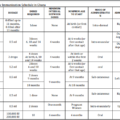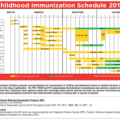Universal Immunisation Programme (UIP) is a vaccination program launched by the Government of India in 1985. It became a part of the Child Survival and Safe Motherhood Programme in 1992 and is currently one of the key areas under the National Rural Health Mission since 2005. Immunization is a global health and development success story, saving millions of lives every year. Vaccines reduce the risks of getting a disease by working with your body’s natural defences to build protection. When you get a vaccine, your immune system responds.
We now have vaccines to prevent more than 20 life-threatening diseases, helping people of all ages live longer, healthier lives. Immunization currently prevents 2-3 million deaths every year from diseases like diphtheria, tetanus, pertussis, influenza, and measles. Immunization is a key component of primary health care and an indisputable human right. It’s also one of the best health investments money can buy. Vaccines are also critical to the prevention and control of infectious-disease outbreaks. They underpin global health security and will be a vital tool in the battle against antimicrobial resistance.
Universal Immunisation Programme
The immunization Programme in India was introduced in 1978 as the ‘Expanded Programme of Immunization’ (EPI) by the Ministry of Health and Family Welfare, Government of India. In 1985, the programme was modified as the ‘Universal Immunization Programme’ (UIP) to be implemented in a phased manner to cover all districts in the country by 1989-90 one of the largest health programmes in the world. Ministry of Health and Family Welfare, Government of India provides several vaccines to infants, children, and pregnant women through the Universal Immunization Programme.
Vaccines provided under UIP:
BCG
About-BCG stands for Bacillus Calmette-Guerin vaccine. It is given to infants to protect them from tubercular meningitis and disseminated TB.
When to give – BCG vaccine is given at birth or as early as possible till 1year of
Route and site- BCG is given as an intradermal injection in the left upper arm.
OPV
About-OPV stands for Oral Polio Vaccine. It protects children from poliomyelitis.
When to give– OPV is given at birth called zero doses and three doses are given at 6, 10, and 14 weeks. A booster dose is given at 16-24 months of age.
Route and site – OPV is given orally in the form of two drops.
Hepatitis B vaccine
About – Hepatitis B vaccine protects from Hepatitis B virus infection.
When to give- Hepatitis B vaccine is given at birth or as early as possible within 24 hours. Subsequently, 3 doses are given at 6, 10, and 14 weeks in combination with DPT and Hib in the form of a pentavalent vaccine.
Route and site- Intramuscular injection is given at the anterolateral side of the mid thigh.
Pentavalent Vaccine
About-Pentavalent vaccine is a combined vaccine to protect children from five diseases Diptheria, Tetanus, Pertussis, Haemophilus influenza type b infection, and Hepatitis B.
When to give – Three doses are given at 6, 10, and 14 weeks of age (can be given till one year of age).
Route and site-Pentavalent vaccine are given intramuscularly on the anterolateral side of the mid thigh. SEE:Immunization Schedule Philippines
Rotavirus Vaccine
About -RVV stands for Rotavirus vaccine. It gives protection to infants and children against rotavirus diarrhoea. It is given in select states.
When to give – Three doses of vaccine are given at 6, 10, 14 weeks of age (can be given at one year of age).
Route and site-5 drops of liquid vaccine or 2.5 ml (lyophilized vaccine) are given orally.
PCV
About- PCV stands for Pneumococcal Conjugate Vaccine. It protects infants and young children against disease caused by the bacterium Streptococcus pneumoniae.
When to give – The vaccine is given in two primary doses at 6 & 14 weeks of age followed by a booster dose at 9-12 months of age.
Route and site– PCV is given as intramuscular (IM) injection in antero-lateral side of mid- thigh. It should be noted that pentavalent vaccine and PCV are given as two separate injections into opposite thighs.
FIPV
About– fIPV stands for Fractional Inactivated Poliomyelitis Vaccine. It is used to boost the protection against poliomyelitis.
When to give- Two fractional doses of IVP are given intradermally at 6 and 14 weeks of age.
Route and site- It is given as an intradermal injection at the right upper arm.
Measles/ MR vaccine
About-Measles vaccine is used to protect children from measles. In a few states, Measles and Rubella, a combined vaccine is given to protect from Measles and Rubella infection.
When to give-First dose of Measles or MR vaccine is given at 9 completed months to12 months (vaccine can be given up to 5 years if not given at 9-12 months ago) and the second dose is given at 16-24 months.
Route and site – Measles Vaccine is given as a subcutaneous injection in the right upper arm.
JE vaccine
About– JE stands for Japanese encephalitis vaccine. It gives protection against Japanese Encephalitis disease. JE vaccine is given in select districts endemic for JE after the campaign.
When to give– JE vaccine is given in two doses, the first dose is given at 9 completed months-12 months of age and the second dose at 16-24 months of age.
Route and site- Live attenuated vaccine is given as a subcutaneous injection in the left upper arm and the killed vaccine is given as an intramuscular injection in the anterolateral aspect of mid- thigh.
DPT booster
About-DPT is a combined vaccine; it protects children from Diphtheria, Tetanus, and Pertussis.
When to give -DPT vaccine is given at 16-24 months of age and is called DPT first booster and DPT 2nd booster is given at 5-6 years of age.
Route and site- DPT first booster is given as an intramuscular injection in antero-lateral side of mid-thigh in left leg. DPT second booster is given as an intramuscular injection in the left upper arm.
Tetanus and adult diphtheria (Td) vaccine:
About-TT vaccine has been replaced with Td vaccine in UIP to limit the waning immunity against diphtheria in older age groups.
When to give- Td vaccine is administered to adolescents at 10 and 16 years of age and to pregnant women.
Pregnant women- Td-1 is given early in pregnancy as the first dose and 4 weeks after Td1, the second dose of Td as Td-2 is given. Td- Booster is given if a pregnant woman has received 2 TT/Td doses in pregnancy within the last 3 years.* Intra-muscular Upper Arm.
Route and site- Td is given as an intramuscular injection in the upper arm. SEE: Immunization Schedule In Ghana






